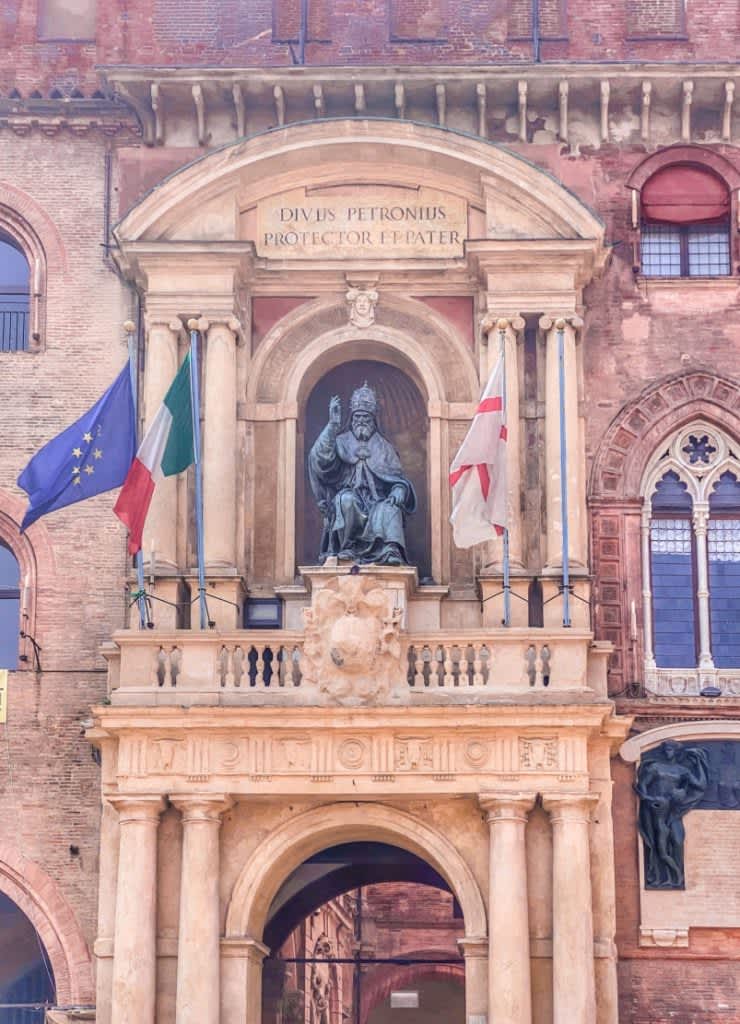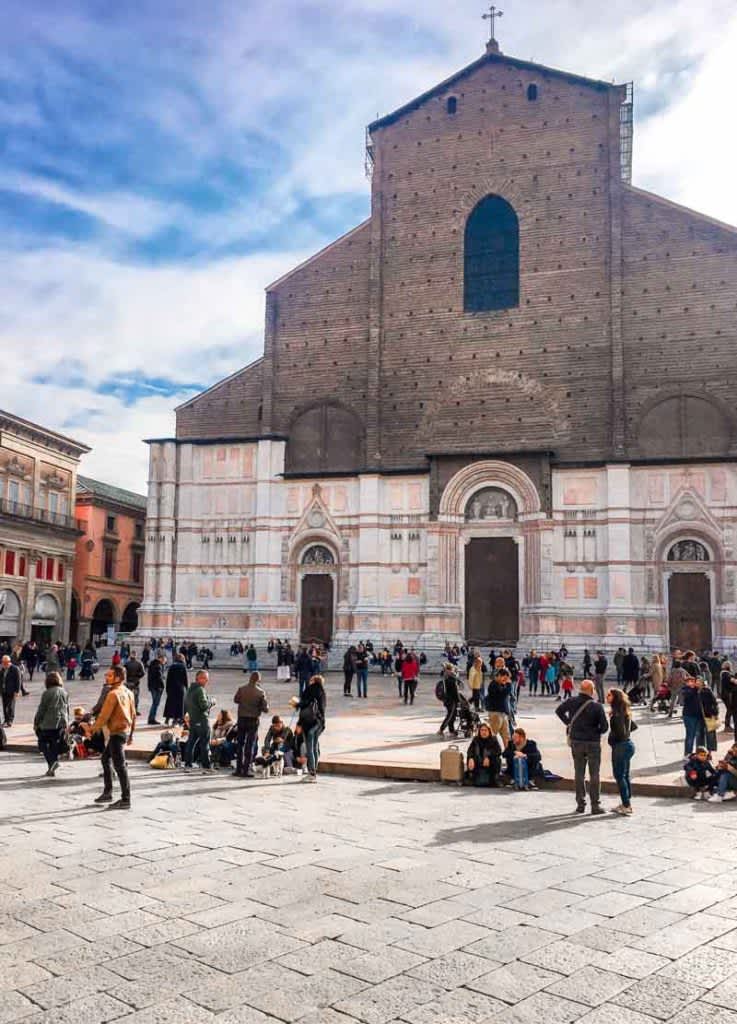Essential Bologna walking tour
Bologna, between history, legend and gastronomy
Bologna, Italy

Bologna is today an evolved metropolis of medieval origin, rich in history, legend, curious secrets and delicacies.
Definitely known for its gastronomic tradition and its delicious local products that conquer all palates from the first taste. It is the crossroads of large Italian cities; one of the most important railway hubs: connection between the north and south of the country; as well as the seat of the oldest university in the world.
You can visit Bologna like this: wandering through the narrow streets of the center letting yourself be guided by the intoxicating scents of the historic shops, among the smiles of the Bolognese and their amusing interlayer. But to be understood more deeply, Bologna must be told.
Being born here, I had great luck, I grew up discovering its secrets day after day, the stories that lie behind the seemingly anonymous monuments or intersections and which made me a proud "extra" in the chronicle of this city.
Passionate (like many of my fellow citizens) of the history of Bologna, on a hot July afternoon, I played being a tourist in my city and, with a small group of English people, I let myself be guided by Margherita, our guide, to 2 hours to re-discover the center.
If you are visiting Bologna for the first time or have little time to discover it, this essential itinerary of the historic center is ideal. It is a journey through history, gastronomy and curiosity that will make you discover how the tenacious character of its citizens has incredibly distant origins.
"See you under Neptune's ass!" It is with this phrase that those who live in Bologna often meet in the center. Not surprisingly, Piazza del Nettuno is the starting point for this tour of the historic center of Bologna.
 Palazzo d'Accursio, Bologna
Palazzo d'Accursio, Bologna
Palazzo D'Accursio
The itinerary starts from Palazzo D'Accursio, the current municipal seat built a few steps from the first stone at the origin of the Etruscan city. Margherita's story takes us through the most important historical eras experienced by the city and there are some anecdotes on architectural details that we can still admire. The events of Bologna are linked for centuries to the Papal dominion. The Pope, in the various figures that have gradually alternated, was sometimes seen by the citizens of Bologna as a villain of comics, to be mocked and to whom "the crest must be lowered". Episodes of "revolt" by citizens accustomed, in this city, to having wide margins of individual freedom often recur in history. Among the vandal actions, there are also allusive acts aimed at protecting one's ideals of independence and protecting artistic beauty.
 Nettuno Fountain in Bologna
Nettuno Fountain in Bologna
All about Piazza Maggiore
Bologna is a concentrate of curiosity from its most crucial point, Piazza Maggiore which has always been, since its foundation, its main square. Here you can admire the most fascinating palaces such as Palazzo dei Notai and Palazzo Re Enzo, once a prison now used as a wonderful location for important events and the Basilica of the beloved San Petronio, the non-holy saint. A reassuring Giant watches over everything, the Fountain of Neptune, once often at the center of controversy due to the numerous details that are too sexy for the Pope. It is said that its author, Giambologna, sculpted it in such a way that from a certain observation point, specially marked at the entrance of Sala Borsa, one could see a spicy detail for a particular optical effect: the finger of the statue, from that view, shows itself as if it were his erection.
 San Petronio Basilica in Bologna
San Petronio Basilica in Bologna
The wonderful Basilica of San Petronio
Now we are entering the Basilica of San Petronio, huge and unfinished. It was designed to become larger than St. Peter's Basilica in Rome but the project was downsized and the sides were never built at the behest of the Church of Rome. This is just one of the peculiarities that make it unique in its kind. Entering the church is an obligation. One of the most curious and controversial frescoes is "Mohammed in Hell". And precisely for fear of religious attacks or retaliation, the church is always under surveillance, manned day and night by army trucks. Another important attraction of San Petronio is the solar calendar. An unmissable engineering jewel, especially considering that it was conceived in 1650 (approximately) by Gian Domenico Cassini, during his stay in Bologna.
 Asinelli and Garisenda towers in Bologna city center
Asinelli and Garisenda towers in Bologna city center
The two Towers
From Piazza Maggiore we head towards Via Rizzoli to reach the Two Towers. Just think that in medieval times in the city almost eighty towers soared, which is why it was called "Bologna la Turrita". Today, several centuries have passed, about twenty remain. The most famous are two, the Two Towers: Asinelli, the tallest, and La Garisenda, short and crooked.
Surely built for defensive purposes and to affirm the prestige of the Asinelli family over the other noble families of the city, behind the highest tower, there is a romantic legend that I want to tell you:
"It is said that the tower was built by a young man who used to transport sand and gravel with his donkeys. On one of his frequent travels, he saw a beautiful girl from a rich and noble family and fell in love with her. Having declared her love for her and asked her father to marry her, the latter mocked him and entrusted him with an impossible mission: he said: “You will marry her when you bring the highest tower in the city as a dowry”.
The boy was about to resign himself to his destiny of solitude when one day, while he was collecting gravel along the river, he found a chest full of gold. He then used this gold to start the construction of the tower and in just nine years, he succeeded in his purpose and was able to marry the beautiful rich girl."
The waterways and Santo Stefano
Crossing the Jewish Ghetto, a maze of narrow lanes where it is also possible to lose one's bearings, we arrive in via Piella. From here, through a particular window, you can see the only still visible channel of the dense network of waterways of the past.
The itinerary continues in Piazza Santo Stefano, one of my favorite squares in Bologna both for the nightlife that animates it, and for its architectural charm. We admire the complex of the "Seven Churches", beautiful both from the outside and from the inside. Here too there is no shortage of anecdotes from ancient times, curses and fascinating mysteries that are hidden right before our eyes, some still to be revealed.
Gastronomy
The streets of the Quadrilatero (the denomination that derives from the particular urban conformation of the historic center of Bologna), are the background to the many stories, which, between truth and fantasy, describe our gastronomic specialties, those that everyone envies us. The spaghetti Bolognese does not exist and is a legend invented to evoke another delicious dish, this one truly typical: the tagliatelle al ragù.
The big surprise for foreign tourists who, finally, right here discover this fake news and will no longer dare to ask for meatballs in the middle of pasta. And then, the Parmigiano Reggiano and its controlled origin; the Mortadella which is Mortadella, and should not be called "Bologna"!
Finally, the tortellini with an intriguing shape and therefore also known as the “navel of Venus”. We conclude this fascinating walk with an aperitif all together, with a taste of "Bologna".
 Tagliatelle with bolognese saouce
Tagliatelle with bolognese saouce